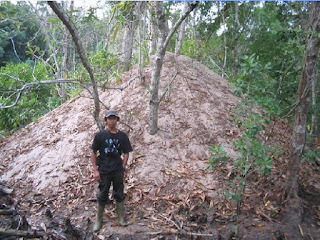Dear Mr. Yong,
I wish to make a complaint.
Your book, An Immense World, covers ground with which I am well familiar. I teach the concept of Umwelt – the “sensory world” of animals – frequently in my university classes, and have made my own modest contributions to the field of sensory biology. That confession might lead you to think that my complaint is that I was not among one of the many researchers interviewed for your work, as you have clearly done substantial and thorough investigation of the material presented in this volume. Indeed, the interviews sprinkled liberally throughout the book are informative and often delightful. I assure you, sire, I have a clear-eyed understanding of my stature in the scientific community and I am not so vain as to think my trifling work on crustacean nociception warranted inclusion in this volume.
Indeed, this book is so close to my interests in teaching that one might suspect that my complaint is that I wished to write this book. But this is not the nature of my complaint, since I have many other works to complete already, and I surely could not have completed the task with your admirable skills. This work does not “scoop,” as we academics say, any current or aspiring projects of mine.
I enjoyed the book’s straightforward structure. Most chapters cover a single sensory system, replete with fascinating examples from many species, often interspersed with conversations from the scientists who discovered the abilities of these animals. What reader will not delight is the description of pyrophilic nettles that seek out distant first fires? Or that the skill of echolocation, perfected by bats, is one that humans can also learn? You have often said, Mr. Yong, that you “cover the ‘Wow’ beat” in your journalism, and this surely rings true here. Indeed: wow.
No, the reason for my displeasure is that you have written a book that is not only laudable and will surely be lauded, much as your previous work has been. I note with pleasure that it has already appeared on the bestseller lists of a prominent American newspaper of record. It is surely one of the most accessible and widely read introductions to the field of neuroethology as has ever been written.
And that, good sir, is the nature of my complaint. You have composed a veritable paean to neuroethology, and interviewed many members of the International Society for Neuroethology (of which I am, alas, not presently a member due to my current position asking that I be solely focused on instruction of students), yet nowhere in this estimable book does the word “neuroethology” appear.
This is a grave sin of omission. An Immense World is so clearly and delightfully written that it shall doubtless be read my many a curious and impressionable student, who might well wonder, “How might I, in my studies, eventually become a person who contributes to this field?” And such a wayward learner would have no guides, no indication at all that there is an entire discipline devoted to answering these and related questions, and that its name is neuroethology.
I realize that this is, to a degree, a parochial concern. Yet because this book is so good, and will no doubt be more widely read than many university textbooks on neuroscience or animal behaviour, that I cannot help but lament a missed opportunity to share the wonders of the academic discipline that has been my main scientific “home,” as it were, for many years.
Nevertheless, this book has already inspired my to make sensory biology the focus of a seminar class that I am scheduled to teach this fall. Further, I will recommend this book widely to any who might show an interest in zoology.
Yours in blogging, etc., etc.
P.S.—I confess to having no idea why I chose to author this review in the style of an open letter in the dense prose style favoured in Victorian England, other from it seemed apt.
External links
An Immense World publisher site









